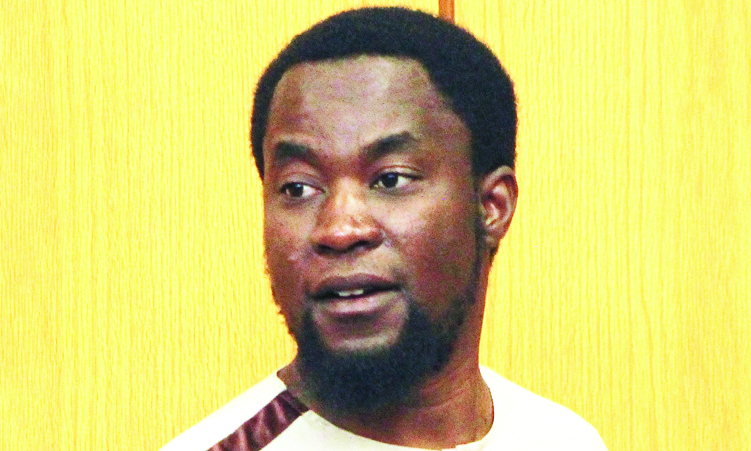Affirmative Repositioning movement leader Job Amupanda wants to rework the lawsuit that he filed at the Windhoek High Court nearly three years ago in an attempt to have Namibia’s veterinary cordon fence removed.
Amupanda has encountered opposition to his latest move in the case that he filed at the High Court in May 2021, though, with five of the defendants in the matter having given notice that they have objections against changes he intends to make to his claim against them.
Judge Shafimana Ueitele ordered yesterday that Amupanda should file his application to be allowed to amend his claim by 8 March, and the defendants should file answering affidavits in response to his application by 5 April.
Ueitele postponed the case to 16 April for a hearing on the status of the matter.
The defendants who have given notice that they would object to Amupanda’s amendment of his claim are the government, the minister of agriculture, water and land reform, the attorney general and the former Meat Board of Namibia, which has been renamed as the Livestock and Livestock Products Board of Namibia.
In the initial claim filed by Amupanda, he asked the court to declare the veterinary cordon fence, known as the ‘redline’ and erected to control the spread of livestock diseases between northern Namibia and the rest of the country, as unlawful and unconstitutional.
He also asked the court to declare that the fence violates the dignity of the Namibian people and is discriminatory and unconstitutional.
Amupanda further wanted the court to order the government and minister of agriculture to remove the fence, and to stop the government and its officials from confiscating red meat meant for private consumption when it is transported from northern Namibia over the redline.
Amupanda alleged that the fence “continues to be used for purposes of controlling the movement of animals and black people from the north to the south of Namibia”.
He is also claiming that the fence is “a colonial structure”, erected “to achieve colonial aims and objectives”, that it was not sanctioned by any law in Namibia and “is not rationally connected to any purposes”.
In March 2022, lawyer Kadhila Amoomo, who is representing Amupanda, made a first set of amendments to his claim.
Those amendments included allegations that the dignity of people travelling over the redline from the north is violated when their vehicles are searched for prohibited animal products and by “the assumption that persons and meat coming from the north are infested with diseases”.
The new changes that Amupanda wants to make to his claim would expand his case to a declaration that the agriculture minister made in terms of the Animal Health Act in July 2015 and regulations that the minister published under the act in December 2018.
Amupanda is alleging that the minister declared the part of Namibia north of the veterinary cordon fence a “protected area” in July 2015, and that this declaration restricts the movement of cloven-hoofed animals, the meat of cloven-hoofed animals and fresh milk to the south out of that area.
He is also dissatisfied with one of the regulations published by the minister which obliges owners of cattle north of the redline to vaccinate their cattle twice a year against foot-and-mouth disease.
According to Amupanda, the Animal Health Act does not give the minister the power to make such a regulation requiring vaccination of animals against foot-and-mouth disease, and the act also does not allow the minister to prohibit the movement of cloven-hoofed animals out of a protected area.
In an objection filed at the court near the end of last month, lawyer Rohann Linde, representing the Livestock and Livestock Products Board of Namibia, says Amupanda misconstrued which part of Namibia has been declared a protected area in terms of the Animal Health Act, and that the protected area is south of the redline and not the part of the country north of it, as alleged by Amupanda.
Linde also stated on behalf of the board that in terms of the minister’s declaration, sheep and goats coming from an official veterinary quarantine facility north of the redline and with a valid veterinary permit may be transported south over the redline in a sealed vehicle.
Raw meat in sealed containers from officially approved abattoirs north of the fence and with valid veterinary permits may also be transported south over the redline, Linde said in the board’s objections as well.
Agriculture minister Calle Schlettwein has said in a witness statement filed at the court in November last year that the veterinary cordon fence serves “as an effective barrier to prevent the outbreak and spreading of infectious animal diseases in Namibia”.
This secures Namibia’s status as a country with a zone free of foot-and-mouth disease without vaccination, which in turn gives the country access to the best-paying markets for its meat products globally – but comes at the cost of limited market access for meat products from the northern communal areas, Schlettwein says.
Shifting the redline or removing it “is not a simple action which can take place overnight”, but requires a gradual approach that would not erase progress made against the spread of livestock diseases like foot-and-mouth disease, he says in his witness statement as well.
Stay informed with The Namibian – your source for credible journalism. Get in-depth reporting and opinions for only N$85 a month. Invest in journalism, invest in democracy –
Subscribe Now!



Leave a Reply